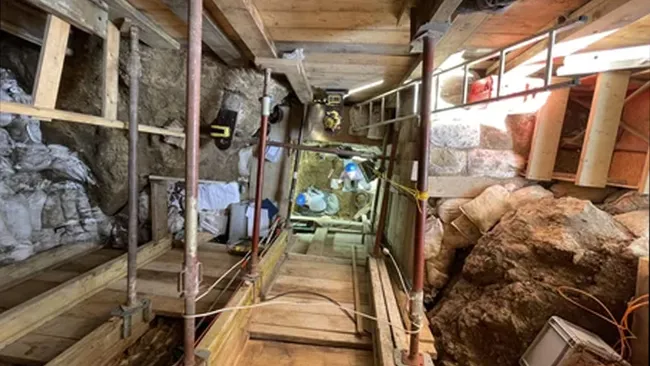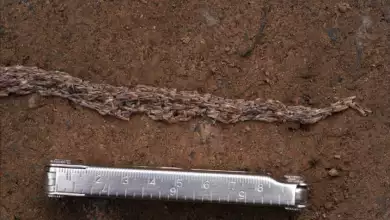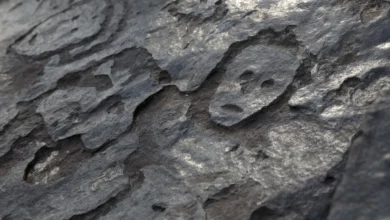
The oldest modern human remains According to a recent study, modern humans crossed the Alps into frigid Northern Europe around 45,000 years ago, suggesting that they may have coexisted alongside Neanderthals in Europe for thousands of years longer than previously assumed.
The oldest modern human remains, which include 13 bone pieces from Homo sapiens who lived in a cave in Germany between 44,000 and 47,500 years ago, are the earliest known H. sapiens remains from Central and Northwest Europe, according to the researchers. The discovery also startled the scientists because the environment in the region was freezing at the time.
“This shows that even these earlier groups of Homo sapiens dispersing across Eurasia already had some capacity to adapt to such harsh climatic conditions,” said Sarah Pederzani, an archaeologist at the University of La Laguna in Spain and the Max Planck Institute for Evolutionary Anthropology in Germany, who led the paleoclimate study of the site. Here is her statement.
Related Article: Woolly Mammoth Tusk Hunter Gatherers Relationship in Alaska
New Studies Rewrite Story of Humans Arriving in Europe: Homo Sapiens Colonized North Much Earlier Than Thought
Before H. sapiens came to Europe, other groups of humans had come there. Neanderthals lived in Europe from at least 200,000 years ago until they died out around 40,000 years ago. They were our closest dead cousins and were very good at surviving in cold climates.
Researchers have already found that H. sapiens came to Southwest Europe around 46,000 years ago. There is still a lot of disagreement about how H. sapiens and Neanderthals interacted during the Middle-to-Upper Paleolithic shift (47,000 to 42,000 years ago) and how much our species may have sped up the Neanderthals’ deaths.
Researchers from three new studies looked at artifacts and the weather from that time to learn more about this strange transitional period. Their results were released online Wednesday (Jan. 31) in the journal Nature and in two studies in the journal Nature Ecology & Evolution.
Mystery of Stone Tools Solved: Early Humans, Not Neanderthals, Made Intricate Artifacts
Archaeologists have already found some different “industries,” or ways of making stone tools, from this period. One of these was the Lincombian-Ranisian-Jerzmanowician (LRJ) industry. It wasn’t clear whether Neanderthals or humans made these tools, though.
“The Upper Paleolithic in Europe [about 35,000 to 10,000 years ago] is linked to modern H. sapiens,” said Jean-Jacques Hublin, a paleoanthropologist at the Max Planck Institute for Evolutionary Anthropology and co-author of the study. “The Middle Paleolithic in Europe [about 300,000 to 35,000 years ago] is linked to Neanderthals.” “The artifacts of the transitional period have sort of mixed features.”
In one of the new studies, LRJ objects were looked at. These included leaf-shaped stone tools that were made with a lot of detail and were found throughout Northern Europe, from Germany to Britain.
The scientists looked at thousands of bone pieces found with LRJ objects in Ilsenhohle, also known as Ilse’s cave, in Ranis, Germany. Not only did the experts dig deeper at the site, but they also looked at remains that were found in the cave in the 1930s and are now in museum collections in a new way.
Related Article: Ancient Face Carvings in the Amazon Offer Clues to Lost Culture
Humans Shared Europe with Bears and Hyenas During Ice Age
One of the new studies found that the cave was sometimes used by hyenas dening and cave bears sleeping. It was also sometimes used by small groups of hominins, most likely H. sapiens or Neanderthals, who ate reindeer, woolly rhinoceroses, and horses. However, many of the bone pieces were too small or broken for experts to use their shape to figure out what they were. Instead, to find out where the bones came from, the experts looked at proteins and DNA that were taken from the bones.
The 13 bone pieces they found were from between 44,000 and 47,500 years ago.
“The common wisdom was that these transitional assemblages of artifacts were made mostly by late Neanderthals,” said Hublin. “What we find with the LRJ is that it was not made by Neanderthals but by Homo sapiens moving into Europe much earlier than we thought.”
Animal teeth and bones found in the cave showed that the area was very cold when people lived there, with steppe or tundra landscapes like those in Siberia or northern Scandinavia today.
“Until recently, it was thought that resilience to cold-climate conditions did not appear until several thousand years later, so this is a fascinating and surprising result,” Pederzani stated in the release. “Perhaps cold steppes with larger herds of prey animals were more attractive environments for these human groups than previously appreciated.”
Humans May Have Arrived in Europe Gradually, Not in a Wave
Neanderthals went extinct in Southwest Europe a few thousand years before H. sapiens showed up in Northwest Europe. This suggests that the two groups may have interacted. Archaeologist William Banks of the French National Center for Scientific Research said, “So we now have another important piece of what is a complicated puzzle” about how H. sapiens and Neanderthals interacted. Banks did not take part in the study but wrote an editorial about it.
“These results suggest that instead of H. sapiens replacing Neanderthals in Europe in a quick east-to-west wave, as was thought before,” Hublin said, “we see Homo sapiens colonizing the northern part of Europe first and living there for several thousand years on the edge of the Neanderthal world.” “I think Homo sapiens probably lived in these pretty harsh places because they were able to use technology to adapt to them.” Homo humans didn’t just come into Europe and replace the Neanderthals all at once. Instead, they came in small groups over time, and after a few thousand years, they fully wiped out the Neanderthals.
Hublin said that in the future, scientists can look into whether other Middle-to-Upper Paleolithic shift businesses whose roots are still unknown came from H. sapiens. “I would also like to examine Neanderthal remains from after contact with Homo sapiens to see if there’s any sign of Homo sapiens DNA in them,” he said.





